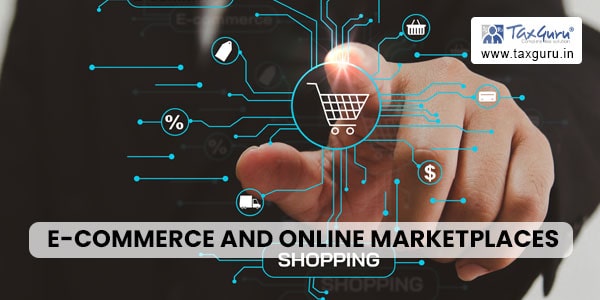Discover the transformative world of e-commerce and online marketplaces in this comprehensive guide. Explore types, advantages, challenges, and future trends for businesses and consumers.
E-commerce and online marketplaces have transformed the way we shop and do business. With the increasing use of technology and the internet, the trend towards online shopping has grown exponentially. According to Statista, the global e-commerce market is expected to reach $6.54 trillion by 2022. This shows the tremendous potential for businesses to tap into this market and grow their revenue through online channels.
In this article, we will explore the world of e-commerce and online marketplaces, including their definition, types, advantages, challenges, and future trends.
Page Contents
What is E-commerce?
E-commerce (Electronic commerce) refers to the buying and selling of goods or services over the internet. It involves a transaction between a buyer and a seller, where the payment is made through online channels. E-commerce has revolutionized the way we shop, as it allows us to purchase products from anywhere in the world, at any time of the day, and get them delivered to our doorstep.

Types of E-commerce
There are several types of e-commerce, each with its own unique features and benefits:
1. Business-to-Business (B2B): This type of e-commerce involves transactions between businesses, where one business sells products or services to another business. This type of e-commerce is used for large-scale purchases, such as raw materials, equipment, or supplies.
2. Business-to-Consumer (B2C): This type of e-commerce involves transactions between a business and a consumer. The business sells products or services directly to the end consumer through an online platform.
3. Consumer-to-Consumer (C2C): This type of e-commerce involves transactions between consumers, where one consumer sells a product or service to another consumer through an online platform. Examples of C2C e-commerce platforms include eBay, Craigslist, and Facebook Marketplace.
4. Consumer-to-Business (C2B): This type of e-commerce involves transactions between a consumer and a business, where the consumer sells a product or service to the business. This type of e-commerce is commonly used in freelance marketplaces, where individuals offer their services to businesses.
Advantages of E-commerce
E-commerce offers several advantages for both businesses and consumers:
1. Convenience: E-commerce allows consumers to shop from anywhere, at any time, and get products delivered to their doorstep. This saves time and effort, and makes shopping more convenient.
2. Greater Reach: E-commerce allows businesses to reach a wider audience, as they are not limited by geographical boundaries. This opens up new markets and opportunities for growth.
3. Lower Costs: E-commerce eliminates the need for physical stores, which reduces costs associated with rent, utilities, and staffing. This allows businesses to offer products at a lower cost, which can attract more customers.
4. Personalization: E-commerce allows businesses to collect data on consumer preferences and behaviors, which can be used to personalize the shopping experience and offer targeted promotions.
Challenges of E-commerce
While e-commerce offers many benefits, it also presents some challenges:
1. Security: E-commerce involves the exchange of sensitive information, such as credit card details, which can be vulnerable to cyber attacks. Ensuring the security of online transactions is critical to maintaining consumer trust.
2. Logistics: E-commerce involves the movement of physical goods, which requires efficient logistics and shipping systems. Ensuring timely and accurate delivery is critical to customer satisfaction.
3. Competition: The rise of e-commerce has led to increased competition, with businesses vying for the attention of online shoppers. Standing out in a crowded marketplace requires innovative strategies and tactics.
4. Technology: E-commerce requires a reliable and user-friendly online platform, which requires investment in technology and digital infrastructure. Keeping up with changing consumer behavior and expectations will be critical to success.
Online Marketplaces
Online marketplaces are digital platforms that connect buyers and sellers, allowing them to transact online. They have become increasingly popular in recent years, as they offer a wide range of products and services from different sellers, all in one place. Examples of online marketplaces include Amazon, eBay, and Alibaba.
Advantages of Online Marketplaces
Online marketplaces offer several advantages for businesses and consumers:
1. Access to a large customer base: Online marketplaces have a large customer base, which can help businesses reach new customers and increase sales.
2. Increased visibility: Online marketplaces are often highly ranked in search engine results, making it easier for businesses to be found by potential customers.
3. Reduced marketing costs: Online marketplaces take care of marketing and advertising, which can reduce costs for businesses.
4. Easy setup: Online marketplaces are easy to set up and require minimal investment in technology and infrastructure.
Challenges of Online Marketplaces
Online marketplaces also present some challenges for businesses:
1. Fees: Online marketplaces charge fees for transactions, which can cut into a business’s profit margin.
2. Competition: Online marketplaces are highly competitive, with many sellers vying for the same customers. Standing out from the crowd can be a challenge.
3. Limited control: Online marketplaces have strict rules and regulations that sellers must adhere to, which can limit their control over the customer experience.
4. Dependency: Businesses that rely solely on online marketplaces for sales are at the mercy of the platform’s policies and decisions.
Future Trends in E-commerce and Online Marketplaces
The future of e-commerce and online marketplaces looks bright, with continued growth and innovation in the industry. Some of the trends to watch out for include:
1. Mobile commerce: With the increasing use of mobile devices, businesses need to optimize their websites for mobile users and offer a seamless mobile shopping experience.
2. Personalization: Businesses will increasingly use data and analytics to offer personalized shopping experiences and targeted promotions.
3. Social commerce: Social media platforms are increasingly integrating e-commerce features, allowing businesses to sell products directly to their followers.
4. Voice commerce: With the rise of virtual assistants like Amazon’s Alexa and Google Assistant, voice commerce is expected to grow in popularity.
Conclusion
E-commerce and online marketplaces have revolutionized the way we shop and do business. They offer several advantages for businesses and consumers, while also presenting challenges that need to be addressed. To succeed in the e-commerce and online marketplace space, businesses need to prioritize customer experience, stay up-to-date with the latest trends and technologies, and be flexible and adaptable to changing consumer behavior and expectations. The future of e-commerce and online marketplaces looks bright, with continued growth and innovation in the industry.






expected to reach $6.54 trillion by 2022.
how in 2023 it is still expected????
Following are the updated information for the year 2023:
According to recent data, the global e-commerce industry continues to experience significant growth in 2023. In fact, experts predict that the e-commerce market will reach a total value of $7.7 trillion by the end of the year.
One of the primary drivers of this growth is the increasing popularity of online shopping, as more and more consumers opt to shop from the comfort of their own homes rather than braving physical stores. This trend has been especially pronounced in the wake of the COVID-19 pandemic, which has accelerated the shift towards e-commerce by forcing many consumers to stay home and avoid crowded public spaces.
Another key factor contributing to the growth of the e-commerce industry is the widespread adoption of mobile devices. As smartphones and tablets have become more ubiquitous, consumers have increasingly turned to mobile e-commerce platforms to make purchases. In fact, mobile e-commerce is expected to account for nearly three-quarters of all e-commerce sales in 2023.
In terms of geography, the Asia-Pacific region is expected to remain the largest e-commerce market in the world, with China and India accounting for the majority of e-commerce sales in the region. However, the North American and European markets are also expected to experience significant growth in 2023, driven by factors such as increasing consumer confidence and the continued expansion of major e-commerce platforms like Amazon and Alibaba.
Overall, it’s clear that the e-commerce industry is poised for continued growth and success in 2023 and beyond. With more consumers shopping online than ever before and mobile e-commerce becoming increasingly popular, the future of the industry looks bright.